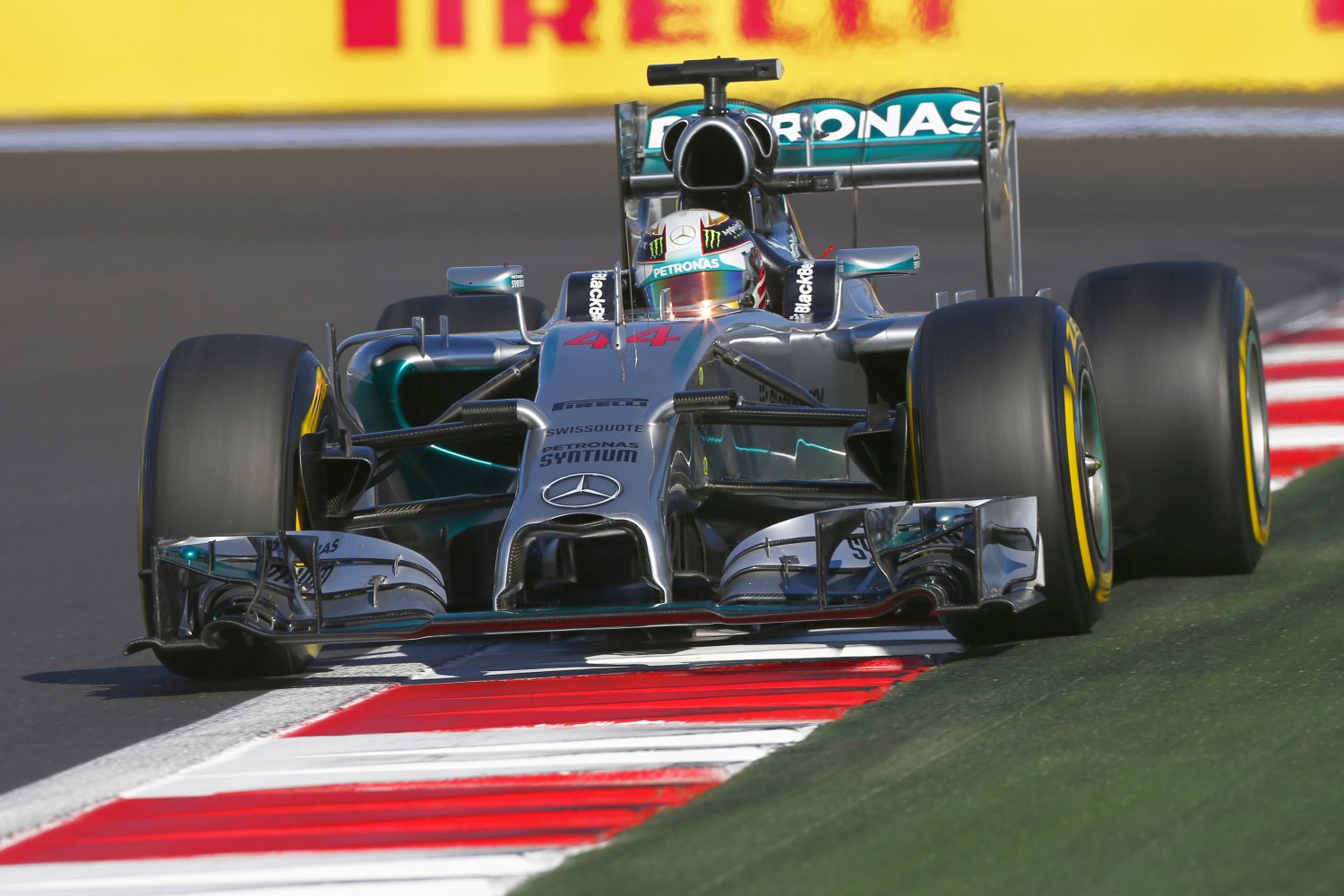Formula One’s Lewis Hamilton: Trying to Get Traction in USA
 |
| Lewis Hamilton and his superior Mercedes F1 car |
Lewis Hamilton, the man known as one of the fastest drivers on the planet, sits calmly on a couch in a downtown New York hotel, speaking of his love for America in general and New York in particular.
This is a place where he can wander the streets without anyone bothering him. "There is no one invading my life and my space," says Hamilton.
That, however, speaks to the biggest problem facing Hamilton and Formula One, whose drivers are anonymous to the U.S. sports-loving public and outside the world of F1 racing fans.
In a sense, Hamilton—the F1 standings leader, and winner of the last four races—is a microcosm of his sport, which will hold the U.S. Grand Prix in Austin, Texas, on Sunday. Those who can understand and follow this rockets-on-wheels version of motor sport marvel at Hamilton's unique talent, his ability to maneuver his car around the intricate curves and through the clogged tracks on F1's Grand Prix circuit, with its stops in Abu Dhabi, Melbourne, Monte Carlo and other playgrounds of the rich. NBCUniversal attracts about 350,000 U.S. viewers for the races it televises on its cable channels, many of which happen in the middle of the night or at dawn U.S. time. That number can climb to more than 1 million when the races are shown on the broadcast network.
To everyone else, though, Hamilton is just some English bloke with a sleeve of tattoos on his right arm, two diamond studs in his ears and a black fedora on his head.
He'd like to change that. Hamilton attended this year's Super Bowl in New Jersey with retired soccer star David Beckham. He says he felt like Cuba Gooding Jr.'s character during the NFL draft scene in the movie "Jerry Maguire," when the overlooked Gooding can barely get a handshake with the other prospects sucking the love out of the room.
One day, even though he enjoys his current U.S. anonymity, Hamilton says he wouldn't mind being Beckham, or Michael Jordan or Roger Federer, an icon of sport, fashion, music—he has been toying around with hip-hop of late—or even movies. "I did a cameo in ‘Cars 2,' " he says.
Few in the U.S. know about the intrateam rivalry that has developed this season between Hamilton and Nico Rosberg, his German teammate with Mercedes. With three races left, Hamilton and Rosberg are first and second in the standings. There has been on-track tension, and there is an icy relationship between each driver's team of engineers and technicians. Hamilton and Rosberg are coolly professional with each other, but they are hardly dinner mates.
"The team rivalry has gone to varying levels personally between these two," says Leigh Diffey, an F1 analyst for NBC. "There has not been one element of it that has been manufactured. The emotion has been raw; it's been real."
If any F1 driver can make the jump from driver to crossover star, it would be Hamilton, a mixed-race, 29-year-old Brit born to a black father and a white mother in Stevenage, a gloomy exurb north of London. Hamilton says his parents' marriage split up when he was 2. His father worked four jobs and raised enough money so that when Lewis was old enough, he could race a used, banged-up go-kart.
Hamilton didn't let his background hold him back. When he was 9, he approached Ron Dennis, the head of the McLaren team, to tell him he wanted to race for them one day. He did, from 2007 to 2012.
He now lives in Monaco and has a home in Vail, Colo., where he spends much of December and January cross-country skiing and snowboarding. At heart, though, Hamilton has always been a gear head, someone who loves the smell of fuel and oil in the garage and the sound and vibrations of engines. If something has a motor, be it a jet ski or a motorbike, he wants to race it.
The winning came easily, perhaps too easily. As a rookie, Hamilton finished a close second in the drivers' standings—he entered the final race in the lead—and then he won the championship the following year, at just 23. He seemed the obvious candidate to fill the large shoes of seven-time champion Michael Schumacher as F1's dominant star. But he hasn't won the title since.
Hamilton says he has come up short mostly because his teams' cars haven't been able to keep up with the Red Bull team's best, driven by Sebastian Vettel, winner of the past four world championships. In 2011, Hamilton says the car was fine but personal problems distracted him. He declined to be more specific.
This year, though, F1 changed its specifications to make its cars more fuel-efficient. The result is a race car with a smaller engine but more power and torque, which plays to Hamilton's ability to overtake opponents through the tiniest crevices. "The driver's technique is more important," he says. Still, he allows that any race team's engineering skills account for at least 70% of a driver's success.
Given that, the larger question for Hamilton is how he can parlay being the fastest driver with the fastest car into becoming the sort of international star he wants to be when the engine stops running. "I want to create a long-term future beyond the sport," he says.
A win in Austin this weekend would be a good place to start. By Matthew Futterman – Wall Street Journal
